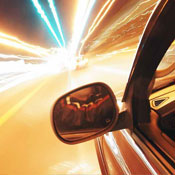
Buying lower-cost Connersville auto insurance is impossible for people who are beginners to quoting and comparing prices online. Since there are so many insurance companies available, how can people have time to compare each option to find the lowest price available?
If you have car insurance now, you stand a good chance to be able to lower your premiums substantially using this information. The purpose of this article is to tell you how to effectively get price quotes. Although Indiana consumers can benefit by having an understanding of the way companies market on the web and apply this information to your search.
Don’t overlook these seven auto insurance discounts
The cost of insuring your cars can be expensive, but discounts can save money and there are some available to cut the cost considerably. Certain credits will be shown at the time of purchase, but lesser-known reductions have to be requested specifically in order for you to get them. If you check and find you aren’t receiving every discount you qualify for, you’re paying more than you need to.
- Paperwork-free – A few auto insurance companies will give a small break for completing your application digitally online.
- Senior Citizen Discount – Drivers over the age of 55 may receive a discount up to 10%.
- Discounts for Federal Employees – Active or retired federal employment could qualify for a slight premium decrease with some auto insurance companies.
- Passive Restraint Discount – Cars that have air bags can receive discounts of up to 25% or more.
- Discounts for New Vehicles – Buying a new car model is cheaper since newer models are generally safer.
- Onboard Data Collection – Policyholders that allow their auto insurance company to spy on driving patterns by using a small device installed in their vehicle like Allstate’s Drivewise may see discounts as long as they are good drivers.
- Sign Early and Save – Select companies give a discount for signing up prior to your current policy expiration. It could save around 10% when you .
Don’t be shocked that most of the big mark downs will not be given to your bottom line cost. Most cut the price of certain insurance coverages like collision or personal injury protection. Despite the appearance that it’s possible to get free car insurance, companies don’t profit that way.
To see insurance companies with significant discounts in Connersville, click this link.
When to get professional advice
When choosing proper insurance coverage for your personal vehicles, there really is not a perfect coverage plan. Each situation is unique.
For example, these questions might help in determining whether or not you will benefit from professional help.
- Do all my vehicles need collision coverage?
- Should I drop comprehensive coverage on older vehicles?
- Do I need PIP (personal injury protection) coverage in Indiana?
- Is my teen driver covered when they drive my company car?
- Am I covered if I drive in a foreign country?
- Does my vehicle qualify for pleasure use?
- Do I benefit by insuring my home with the same company?
If it’s difficult to answer those questions but you think they might apply to your situation, you may need to chat with an insurance agent. If you don’t have a local agent, simply complete this short form.
Coverages available on your auto insurance policy
Knowing the specifics of auto insurance can be of help when determining which coverages you need for your vehicles. The terms used in a policy can be ambiguous and reading a policy is terribly boring.
Comprehensive auto insurance
Comprehensive insurance coverage will pay to fix damage that is not covered by collision coverage. You need to pay your deductible first then your comprehensive coverage will pay.
Comprehensive coverage pays for claims such as rock chips in glass, damage from a tornado or hurricane, hitting a bird, a broken windshield and a tree branch falling on your vehicle. The highest amount your auto insurance company will pay is the cash value of the vehicle, so if your deductible is as high as the vehicle’s value consider removing comprehensive coverage.
Auto liability
Liability coverage provides protection from damage or injury you incur to a person or their property in an accident. It protects you against claims from other people. It does not cover your own vehicle damage or injuries.
Coverage consists of three different limits, bodily injury for each person injured, bodily injury for the entire accident and a property damage limit. You commonly see policy limits of 50/100/50 that means you have $50,000 bodily injury coverage, $100,000 for the entire accident, and property damage coverage for $50,000. Occasionally you may see a combined limit which combines the three limits into one amount rather than limiting it on a per person basis.
Liability coverage pays for claims such as pain and suffering, bail bonds and repair costs for stationary objects. How much liability coverage do you need? That is a decision to put some thought into, but buy as high a limit as you can afford. Indiana requires drivers to carry at least 25,000/50,000/10,000 but drivers should carry higher limits.
Coverage for medical expenses
Medical payments and Personal Injury Protection insurance reimburse you for bills for EMT expenses, dental work, doctor visits, ambulance fees and surgery. They can be used in conjunction with a health insurance plan or if you lack health insurance entirely. Medical payments and PIP cover not only the driver but also the vehicle occupants as well as if you are hit as a while walking down the street. Personal Injury Protection is not available in all states but it provides additional coverages not offered by medical payments coverage
Collision protection
Collision coverage pays for damage to your vehicle from colliding with another car or object. You first must pay a deductible and then insurance will cover the remainder.
Collision can pay for claims such as backing into a parked car, crashing into a ditch, crashing into a building and colliding with another moving vehicle. This coverage can be expensive, so consider dropping it from vehicles that are 8 years or older. It’s also possible to raise the deductible in order to get cheaper collision rates.
Coverage for uninsured or underinsured drivers
Your UM/UIM coverage provides protection when the “other guys” either are underinsured or have no liability coverage at all. This coverage pays for hospital bills for your injuries as well as damage to your vehicle.
Because many people only carry the minimum required liability limits (25/50/10 in Indiana), it only takes a small accident to exceed their coverage. For this reason, having high UM/UIM coverages is a good idea. Usually these coverages are identical to your policy’s liability coverage.
Additional auto insurance information can be found on the through this link. Indiana drivers can view a list of available companies, get help finding coverage, find out which companies have the most complaints, and report car insurance fraud.
Affordable auto insurance is out there
Lower-priced auto insurance can be found on the web as well as from insurance agents, so get from both of them to have the best selection. Some auto insurance companies may not have online quoting and usually these small insurance companies work with independent agents.
When trying to cut insurance costs, do not buy poor coverage just to save money. There are a lot of situations where an insured dropped full coverage only to discover later that their decision to reduce coverage ended up costing them more. Your objective should be to get the best coverage possible for the lowest price, not the least amount of coverage.
People switch companies for a variety of reasons including extreme rates for teen drivers, not issuing a premium refund, delays in responding to claim requests and being labeled a high risk driver. It doesn’t matter what your reason, finding a great new company can be easy and end up saving you some money.

